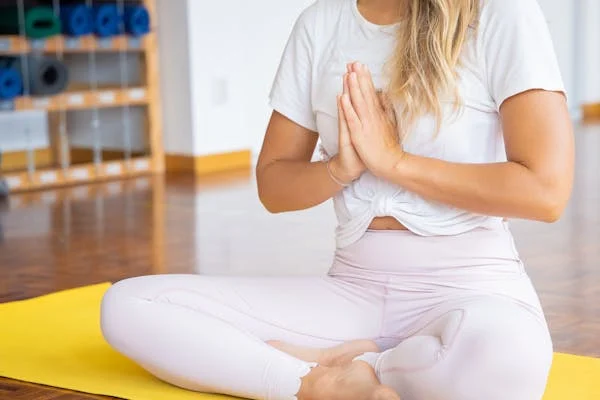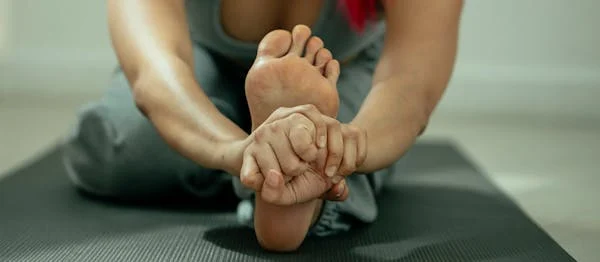Table of Contents
Relaxation Meditation In today’s fast-paced world, where stress and anxiety have become an unavoidable part of life, relaxation meditation is the pathway to reclaiming inner peace and balance.
It is more than a fad; it is an empirically proven technique to calm the mind, soothe the body, and rejuvenate the spirit. Whether you are a beginner or looking to hone your practice, this guide will help you relax and meditate effectively.

Relaxation Meditation Definition
Relaxation meditation is simply a kind of meditation meant for clearing the head and dissolving physical tensions. In some other practice of meditation, the technique might be employed in order to increase concentration and promote spiritual ascension, while in others, relaxation is the highest priority and ultimate objective-to achieve peacefulness and freedom from stress, that is to say a mental cleanup or letting body relax itself deep down.
As you relax and meditate, you create a harmonious connection between your mind and body. Such connection allows the built-up stress to be released and can thus make it easier to face challenges with clarity and composure.
Benefits of Relaxation Meditation
The benefits of relaxation meditation are very broad and multidimensional. Here are some key advantages:
1. Stress Relief and Anxiety Reduction
Regular relaxation meditation practice reduces cortisol, the hormone associated with stress. Whenever you relax and meditate, your body shifts to a parasympathetic state, which promotes relaxation and reduces anxiety.
2. Improved Concentration and Mental Clarity
Relaxation meditation removes mental fog and enhances concentration. You train your mind to be present and focused through time spent relaxing and meditating, which can help boost productivity and make better decisions.
3. Improved Sleep Quality
Struggling with sleepless nights? Relaxation meditation can be of help. Calming your mind before bedtime prepares your body for a restful sleep, making both the quantity and quality of your rest better.
4. Overall Well-Being
In addition to mental benefits, relaxation meditation has positive effects on physical health: it lowers blood pressure, makes the heart healthier, and develops immunity. It is indeed a holistic tool for wellbeing.
How to Prepare for Relaxation Meditation
Before the actual start of the session, the proper setting should first be prepared to achieve a fruitful session. Here’s how to do it:
1. Setting the Right Environment
Choose a quiet and peaceful place free from distractions. Turn down the lights and add soothing elements to enhance relaxation, such as scented candles or a soft rug.
2. Choosing the Right Time
It is best done in the morning and evening. A session at the beginning of the day sets you to relax and meditate properly, and an evening session helps let go of the stress during the day.
3. Loose Garments
You should not be wearing anything too tight or constrictive that will prevent you from relaxing. Wear loose garments so that you can either sit or lie down with ease.

Relaxation Techniques
There are various methods to relax and meditate; it varies with what’s necessary to your need. Try experimenting in them and finding what best fits for you:
1. Guided Meditation
Guided meditation requires one to listen to a teacher or recording that helps control where one places their attention. For new meditators, guided meditation can prove helpful, for these are normally hard to try meditating on your own.
2. Breathing Exercises
Breathing deeply and rhythmically is the foundation of relaxation meditation. Techniques such as diaphragmatic breathing or the 4-7-8 method can calm your nervous system and lead to relaxation.
3. Progressive Muscle Relaxation
This method involves tensing and then slowly releasing each muscle group in your body. It’s an excellent way to relax and meditate, especially if physical tension is a concern.
4. Visualization
Imagine a peaceful place, like a beach or a forest, to get into a state of calm. Visualization helps the mind relax and meditate by focusing on soothing imagery.
5. Mindful Listening
Listen to nature sounds or soft music to enhance your meditation experience. Pay attention to each note or sound to anchor yourself in the present moment.
Relax and Meditate Step-by-Step Guide
Follow these easy steps to begin your relaxation meditation journey:
Find a Quiet Spot: Choose a quiet place where you won’t be disturbed.
Sit or Lie Down Comfortably: You can use a cushion, chair, or yoga mat to support your posture.
Close Your Eyes: Block out the visual distractions and turn your attention inwards.
Focus on Your Breathing: Take slow, deep breaths. Feel the air entering your nose and filling your lungs.
Let Go of Thoughts: Don’t resist your thoughts; acknowledge them and gently bring your focus back to your breath.
Gradually Return to Awareness: After 10–20 minutes, slowly open your eyes and take a moment to reorient yourself.
Common Mistakes to Avoid in Relaxation Meditation
While relaxation meditation is simple, certain missteps can hinder your progress. Avoid these common pitfalls:
Trying Too Hard to Relax: Relaxation must happen; it cannot be forced and become frustrating.
Inconsistency: Periodic practice will not bring desirable outcomes. Make meditation a routine practice.
Neglect of Surrounding Environment: A noisy or an uncomfortable space can make relaxation and meditation impossible.
Tips for Effective Relaxation and Meditation
For full relaxation meditation benefits, do the following:
Start Small: Begin with short sessions of 5–10 minutes and gradually extend the duration.
Use Aromatherapy: Scents like lavender or chamomile can enhance relaxation.
Stick to a Schedule: Consistency is key. Meditate at the same time every day to build a routine.
Be Patient: Don’t expect instant results. With time and practice, you’ll notice significant improvements.
Incorporating Relaxation Meditation into Daily Life
Relaxation meditation is not a solitary activity. It can be easily interwoven into your daily schedule:
Work Breaks: Short sessions during work breaks to refresh the mind.
Pre-Bedtime Ritual: Sessions to prepare the body for sleep.
Family Time: Involve loved ones to make meditation a shared experience.

Overcoming Challenges in Relaxation Meditation
While relaxation meditation is easy, novices often encounter problems that might discourage them. Here are some common challenges and some tips on how to overcome them:
1. Restless Mind
Many people experience a racing mind during meditation. If you find that you cannot relax and meditate because your thoughts are intruding, then try to focus on your breath or use a mantra like “peace” or “calm.” Remember, it is okay for thoughts to arise; it is how you redirect your focus.
2. Trouble sitting still
Physical discomfort can be a barrier. Try out different positions—sitting on a chair, lying down or using cushions for support. The goal is to be able to relax and meditate without straining.
3. Lack of Immediate Results
Relaxation meditation is a practice of yielding cumulative benefits. Instead of expecting instant gratification, focus on becoming routine. Celebrate when you feel calmer after the session or more focused about a particular thing.
comforting and cocoon-like condition to help you relax yourself into meditation.
3. Journal before or after meditation
Other ways may help clear mental clutter and therefore can prepare to focus on the session before sitting for meditation. Writing thoughts after meditation will improve the perception of self-awareness while at the same time monitoring the improvement overtime.
4. Guided Videos and Online Communities
For relaxation meditations, you can join online communities or watch videos uploaded free on YouTube. This usually gives you the support group and motivation in sticking with practice. It helps in ensuring responsibility during the practice sessions.
Science Relaxation Meditation
It may be useful to understand how relaxation meditation works on a physiological level in order to understand its significance better:
Activates the Parasympathetic Nervous System: Relaxation meditation changes your body from the “fight or flight” mode, sympathetic nervous system, to the “rest and digest” mode, PNS. It reduces heart rate, lowers blood pressure, and promotes calmness.
Reduces Cortisol Levels: High stress leads to elevated cortisol levels, which can harm your body over time. Regular practice of relaxation meditation helps regulate these stress hormones.
Increases Brain Plasticity: Studies show that meditation enhances the brain’s ability to adapt and form new neural connections, improving resilience and emotional well-being.
Boosts Endorphin Production: Meditation brings about the natural production of endorphins, often known as the “feel-good” hormones, leaving an individual with a feeling of being happy and relaxed.
Variations of Relaxation Meditation According to Lifestyle
Everybody has his or her unique approach, and relaxation meditation could be made according to anyone’s personal preference:
1. Short sessions for busy schedules
If you don’t have time, meditate for 5 minutes in a coffee break or during commuting (safely if using public transport). Even short sessions can be useful to relax and meditate properly.
2. Nature
Meditate in the garden, park, or by the lake. The natural environment increases relaxation and makes it easier to concentrate.
3. Combination of Meditation with Other Practices
Combine relaxation meditation with yoga, tai chi, or deep stretching to improve its effectiveness. These exercises prepare the body and mind for the transition to a meditative state.
4. Family-Friendly Meditation
Engage children or partners in this practice to share a feeling of calm and mindfulness. This can be fun and nurturing for family members involved in guided family meditation.

Conclusion
Relaxation meditation helps one to relax and meditate effectively thereby enhancing one’s mental, emotional, as well as physical health. As such, by using all the techniques and tips outlined above in this guide, you can transform your life at large and also be in a state of peaceful innerness.
Remember, it all begins with that first breath toward relaxation. Take a deep breath, let go of all stress, and start on your journey today. As you regularly relax and meditate, you unlock a calmer, centered version of yourself.
